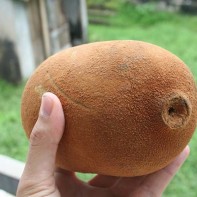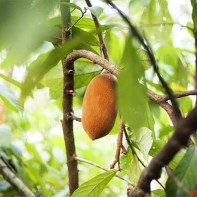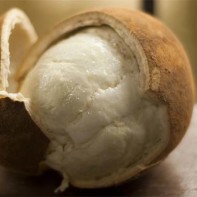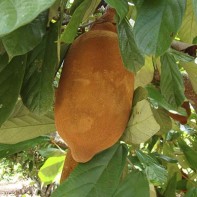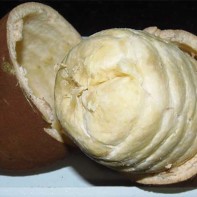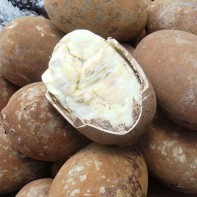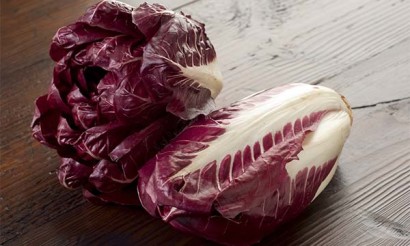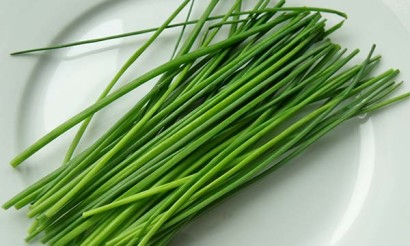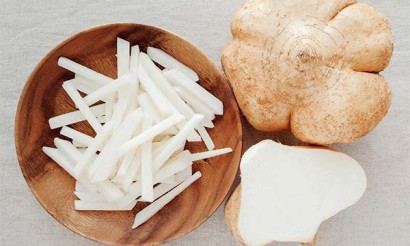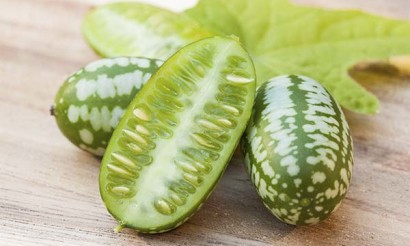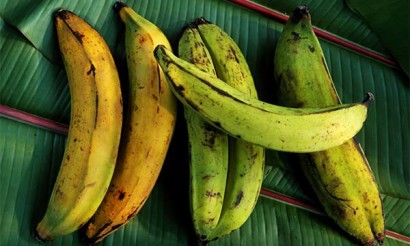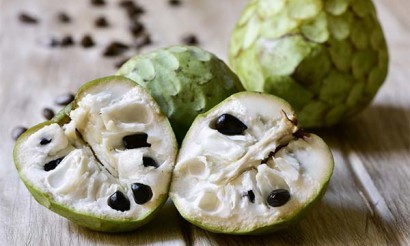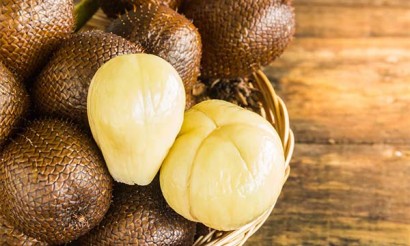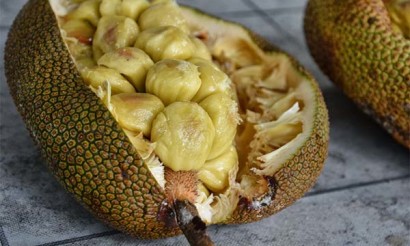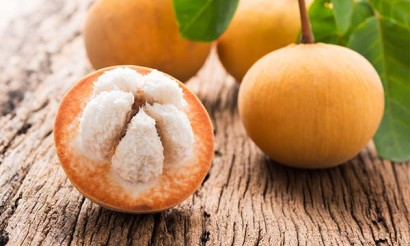Cupuasu: what is this fruit and why is it useful?
Exotic fruit cupuasu was a familiar delicacy of the aborigines of the Amazon before the appearance of the white man. That's when they began to grow it specifically to avoid picking it through the jungle.
- What is this fruit
- What it looks like
- Where it grows
- What is the usefulness of the kupuasu fruit
- What harm it can do
- How to eat cupuaçu properly
- What to make with cupuassu
- Smoothie with peach
- Banana smoothie
- Cupuassu cheesecake
- Topical applications in folk medicine
- Cosmetic Applications
- How to grow cupuassa
There is an interesting story behind the name of this fruit. The Japanese were the first to take out a patent on the fruit's name, and later on they patented it for the chocolate made from its seeds. The Brazilians responded by proclaiming cuça as their national treasure and even celebrating its day. That's the way things are now: the fruit is Brazilian and the brand is Japanese.
What kind of fruit is it
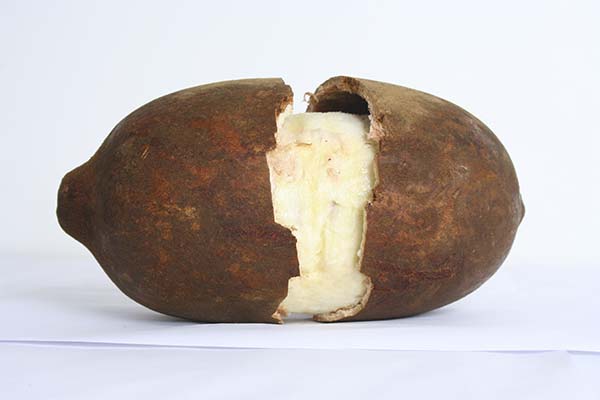
This unusual fruit grows on the Cupuasu tree, or, as it is called scientifically, Theobroma grandiflorum (lat. Theobroma grandiflorum). In the wild, this giant can be up to 20 meters tall with a trunk girth of half a meter. In plantations, the cultivated tree has become noticeably smaller in height and does not grow taller than 5 meters. Maybe this is due to the fact that the plant does not tolerate direct sun and begins to lose its leaves, so we have to either grow taller plants nearby or cover Theobroma with a special net. That's why they started to breed varieties with lower trees.
The trunk itself has an unusual structure. Already above the ground it is often divided into three branches, each of which also tries to split, forming a dense crown. The plant blooms year-round, but its activity peaks in dry seasons so that beetles, ants and bees do not interfere with downpours to pollinate the flowers located right on the trunks and branches.
The mass harvest is from February through April. During this time, many residents are busy in the industry.
What it looks like
In botanical terms, the fruit of cupuasu is a berry that weighs from 1 to 4 kg. It looks like a heavily elongated, oval-shaped coconut with a red-brown color. It is somewhat reminiscent of its close relative cocoa.
Only fruits that have fallen from the tree have a real flavor; picked fruits cannot gain the necessary flavor and aroma that make this fruit so expensive. Cupuasu cannot be stored, so it must either be eaten immediately or frozen. The fruit is twice as long as it is wide and reaches 25-30 cm. Beneath the hard shell hides a whitish flesh which gives off the aroma of citrus and chocolate. It envelops the seeds, which are nestled in 5 sockets.
You can only find the frozen fruit on sale in stores in northern countries, as it is not stored fresh.
Where does it grow
The cupua tree is one of the endemic plants. It is not found in the wild anywhere except Brazil. It has now been introduced into Venezuela, Colombia, Ecuador, Peru, Costa Rica and Mexico. Nevertheless, Brazil leads the way in industrial cultivation of the fruit.
It is not only the fruit that is used in the country. The bark of the tree is used to make original furniture, and the trunk of the plant is considered a building material.
For the successful growth and fruiting of Theobroma large-flowered requires high humidity (77-88%), an average air temperature of 25 degrees and fertile soil. Drought and direct sunlight are detrimental to the plant.
How is the fruit of cupuasu useful?
The natives of the Amazon call cupuasu the food of the gods. Indeed, few other plants can boast such an abundance of useful properties along with a pleasant taste. The fruit helps:
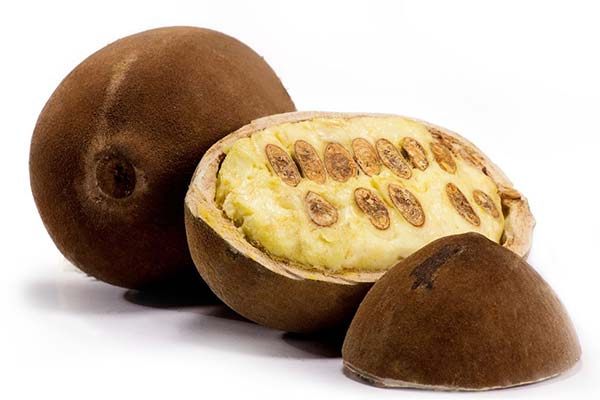
- For metabolic disorders. Normalizes the work of the whole body.
- In diseases of the gastrointestinal tract.
- Normalizes the work of the intestines.
- Removes toxins from the body than reduces allergic reactions to food.
- Helps to improve immunity.
- Works as a natural analgesic.
- Reduces the production of harmful cholesterol.
- Beneficial effect on the cardiovascular system.
- Protects cells from premature aging, improves memory.
- Acts as a natural antidepressant.
- Beneficial effect on the cells of the epidermis, helping to maintain skin elasticity.
- Helps bring weight back to normal in case of excess body weight.
The fruit contains caffeine, kupuasu oil, vitamins B, E, C, A, magnesium, potassium, calcium and sodium. But of the micronutrients there is only one iron. Due to its rich composition, the fruits of the tree Theobroma large flowering are widely used in folk medicine and cosmetology.
What harm can it do
- If you have high blood pressure, you can use kupuasu only in small quantities, because, in addition to caffeine, it contains other stimulating substances. All this can negatively affect the health of people prone to hypertension.
- Also you should not eat it if you are prone to stroke or heart attack.
- Diabetics also find kupuasu contraindicated because of its high glycemic index and the large amount of carbohydrates contained in the fruit.
- Those who suffer from allergies to cocoa products will also feel unwell after eating this tropical plant.
- It is not advisable to eat a lot of exotic fruit if the body is not accustomed to such food. You should start with small portions. Children who come from other regions, to give kupuasa up to 3 years old is not recommended. After that age limit is carefully introduced into the diet in small doses.
How to eat cupuassu properly
The fruit has a rather tough shell, a little less than a centimeter thick. To crack it, you have to make a lot of effort. As a rule, they use a knife, which they usually hit a few times in a single line.
Underneath the skin lies a fragrant, creamy white flesh. It is eaten fresh. Juice is also squeezed from it, which is considered a special delicacy.
The seeds, which occupy almost a third of the fruit, are not consumed raw because of their bitter taste. They are used for processing to make oil. This is why the fruit is cut from all sides, leaving the core with the seeds untouched.
Everyone describes the taste of the fruit differently, but it has a fruity touch.
What can be made with cupuassu
The flesh of the fruit, cut into small cubes, is added to ice cream. The juice is added to liqueurs, smoothies, cocktails, sauces, marinades. From the fruit make jams, boil jam, add to pastries and candy. Kernels, in addition to oil, are used in the preparation of white chocolate. The fruit goes into production for food additives and medicines.

At home, it can be used to make:
Peach Smoothie.
Ingredients:
- 100 grams of cupuaçu.
- 100 grams of peach.
The fruit is cut into small cubes and placed in a blender. In the glass, before serving, add coconut shavings.
Cocktail with banana
Ingredients:
- 1 cup of shredded cupuasu pulp.
- 2 medium ripe bananas.
- 300 ml almond milk.
Peel and slice the bananas. Mix all the ingredients with a blender. Before serving, sprinkle with vanilla.
Cheesecake with cupuassu
Ingredients:
- 1 cup sugar.
- 1 can of condensed milk.
- 4 eggs.
- 1 cup chopped cupuassu pulp.
- 1 cup water.
- 1 tablespoon of corn starch.
- First you need to boil the caramel. To do this, dilute half a cup of sugar with 4 tablespoons of water and put it on low heat. Cook it, stirring until it is ready. You can check it by putting a drop of syrup on a piece of ice or in a glass with cold water. The drop should turn into a hard ball, which will split on impact. Pour the finished caramel into a baking dish.
- The remaining ingredients are mixed with a blender. The resulting mass should be poured on top of the caramel.
- Heat the oven to 170 degrees, put a container full of water in it, which will act as a water bath so that the caramel does not burn. On top we put the form with the prepared dough. After 45 minutes the pie is baked. Check the readiness with a toothpick.
The cheesecake is served with the caramel up.
White butter is used to make the chocolate. This product will not get your hands dirty, as it has a higher melting point than cacao butter, which is used to make chocolate in the mainstream. It is called coupulat.
Traditional medicinal uses
Locals widely use kupuasa to treat various ailments:
- Chewing the seeds relieves stomach pains.
- It is believed that the juice of this fruit, if drunk on an empty stomach, can cure infertility, both male and female.
- Eating the pulp of the fruit during childbirth blunted the pain and helped the baby come into the world faster.
- A person weakened by illness or injury would be given the juice of the kupuas so that his strength would return to him as quickly as possible.
- Folk healers claim that a pulp of the fruit, used in the form of a compress, can cure skin diseases, including dermatitis and eczema.
- Aboriginal warriors would drink the juice of the kupuasu before battle to boost morale and become indefatigable.
- It is believed that if one eats one fruit a week for a lifetime, one will be alert and healthy until old age.
Cosmetic applications
Modern cosmetology has seen in kupuasu a source of many useful ingredients and uses it extensively.
- The extract from the juice of the fruit is added to hair and skin care products. It moisturizes well and helps maintain water balance.
- The oil obtained from the seeds by cold-pressing is used in creams, ointments and tonics. It not only inhibits the aging of skin cells, but also makes the skin more elastic and helps to smooth out fine wrinkles. An additional advantage is that the oil also protects against the damaging UV-A and UV-B rays.
- Shampoos and conditioners with kupuasu ingredients help in the treatment of damaged and dry hair.
Buying the oil of this fruit, you can prepare home care cosmetics. Only it can not be used in food. Recommended rates of adding kupuasu oil in cosmetics:
- Facial cream - 2-5% of the total mass.
- Lip balm - 10-20%.
- Body cream - 2-10%.
- Hair mask - 2-5%.
How to grow cupuasu
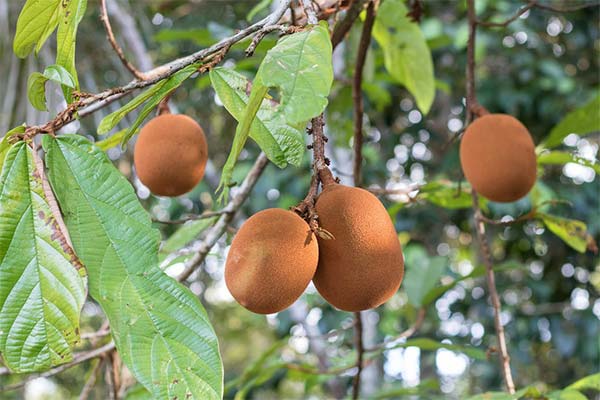
Growing Theobroma large-flowered at home is incredibly difficult, especially in northern regions. Creating a microclimate in the apartment, similar to its native, few people succeed. And living in conditions of high humidity is difficult for humans. In greenhouses, cupuaçu is fine and even bears fruit, as confirmed by the Royal Botanic Gardens of London, which has several specimens of this tree. Nevertheless, some manage to do so in apartments as well.
When choosing a place for the future plant, remember that it does not like direct sunlight, drafts and cold. The air temperature should not fall below 22-25 degrees, the soil below 20. At the same time, the upper limit, even on a sunny day, is 30 degrees Celsius. Otherwise, the tree can get sick and die. Therefore, most often you have to resort to additional heating of the plant.
Humidity can be maintained by spraying, which should be done at least once a day. A good solution is to use a humidifier near the theobra.
At home, the easiest way to grow a cupua is from a seed or cuttings. For the plant, choose oily, well-drained soil. After planting the seeds, the pot can be covered with foil to increase humidity and temperature. Sprouts appear after 15-20 days. After that, the plant is transplanted into a large container and determined to a permanent place.
It should be taken into account that the tree will quickly go into growth, if the conditions will be suitable, and it does not like transplants. Most often, seedlings die from a lack of moisture in the air and ground. This should be paid special attention.
In the second or third year, Theobroma grandiflorum begins to flower. To obtain fruits, artificial pollination will be required.
The taste of fruits grown in a climate far away from the natural one for cupuassu will be noticeably worse. And you won't get the full therapeutic benefits. But in itself an unusual plant from a distant country can bring joy.
«Important: All information on this site is for informational purposes only. purposes. Consult with your health care professional before applying any recommendations. specialist before using the recommendations. Neither the editors nor the authors shall be liable for any possible harm caused by materials."

